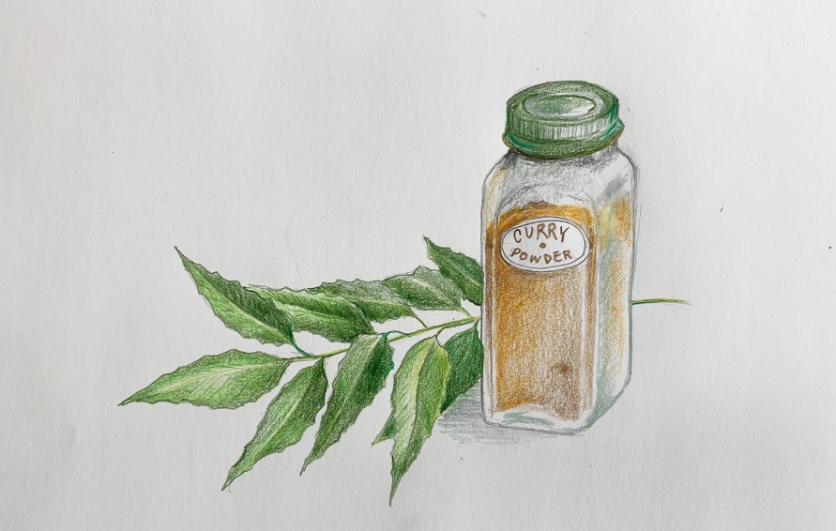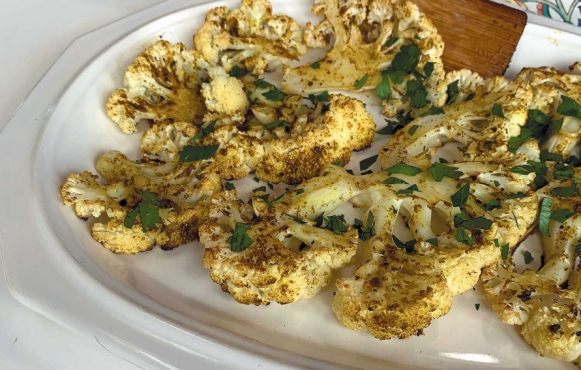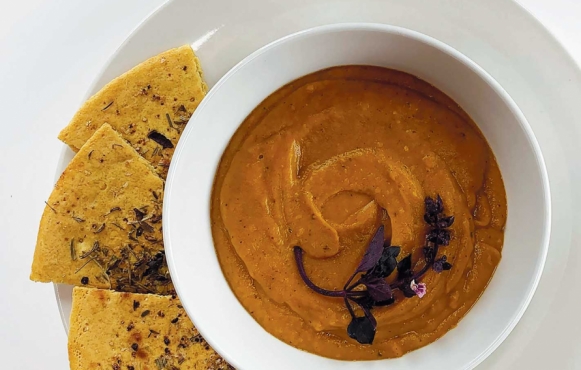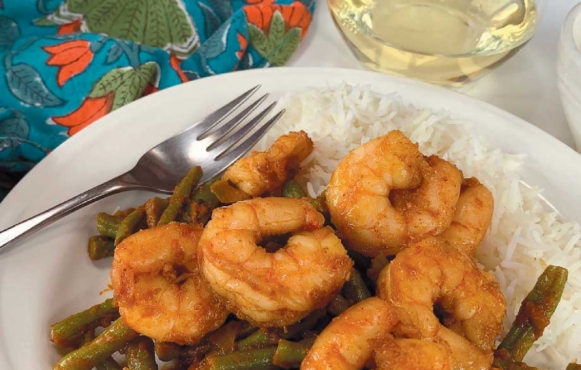Curry: Wonderful for Winter Warming

In the English language, curry is linked to spices associated with food from the Indian subcontinent or South Asia. However, if you are local to those places, you probably don’t use the word in the same way. Curry seems to be the anglicized word for the Indian (Tamil) word kari, which means sauce or gravy—not referring to the specific spices. In the late 1700s the British started applying the word to the saucy and rich dishes of India (a country that they were busy colonizing at the time). Through colonization and trade, curry-style dishes spread to other parts of Asia and South Asia and cooks began to incorporate ingredients typical of those regions such as coconut milk or basil.
But the Brits’ involvement in the history of curry didn’t stop there. It is commonly thought that curry powder was created as a matter of convenience by the British, or by enterprising Indian merchants, depending on who is telling the tale, in the late 18th century. They tried to replicate the blend of spices commonly used in the warm, spicy dishes in order to market it to cooks in the West who wanted to shake it on their boiled beef or vegetables.
Traditional cooking in Asia and South Asia didn’t rely on curry powder for flavoring; however, the spices used in curry powders today were on the menu thousands of years ago in India. A highly nuanced selection of herbs and spices for each meal was chosen based on the traditions of the region and preferences of the cook. Complex combinations were shared through the generations and might include seasonings such as: turmeric, coriander, cumin, garlic, black pepper, fenugreek, cinnamon, fennel, nutmeg, white pepper, cayenne red pepper, cilantro, cloves, cardamom and ginger. Those are the ingredients in Penzeys curry powder, by the way. Other commercial blends include different ingredients such as mint, caraway, anise or bay leaves. In most traditional kitchens, spices were stored in dry form until ready to use, then toasted and ground with a mortar and pestle before being incorporated into the sauce.
Wait! No Curry Leaves?
Curry leaves are the aromatic leaves of the curry tree, often called the sweet neem plant or nim tree, which is related to citrus trees and rue but not to actual neem trees that are used for medicinal purposes. They can be used fresh or dried, and their culinary use is similar to that of bay or kefir leaves.
Curiously, curry leaves aren’t even an ingredient in many curry powders, including Penzeys noted above. They are included in some curry powders such as Laxmi brand but like so many herb or spice mixes, there are lots of variations—almost as many as types of dishes called curry.
Cooking Curry
Since there is a lot of wiggle room around what is considered curry, you can have some fun experimenting with different curry powders to find what you like. Penzeys makes several versions, as does McCormick. Laxmi has one version and the Sun Brand Madras Curry Powder that was created in 1876 for export to England is still a favorite for many. Or you can create your own mix of spices. Start with a basic recipe combining equal parts powdered coriander, cumin and turmeric and add a pinch of cayenne. Use curry powder as a quick way to spice up chicken or potato salad, or get creative and lean into Thai curries with coconut milk or go Caribbean with Jamaican versions of “curry.” Just make it saucy!








